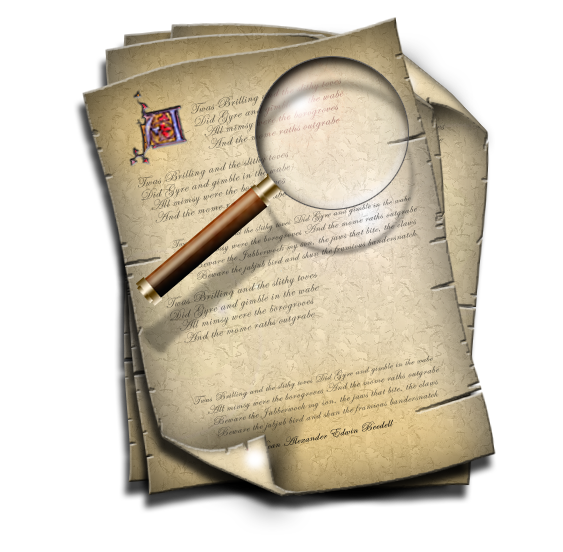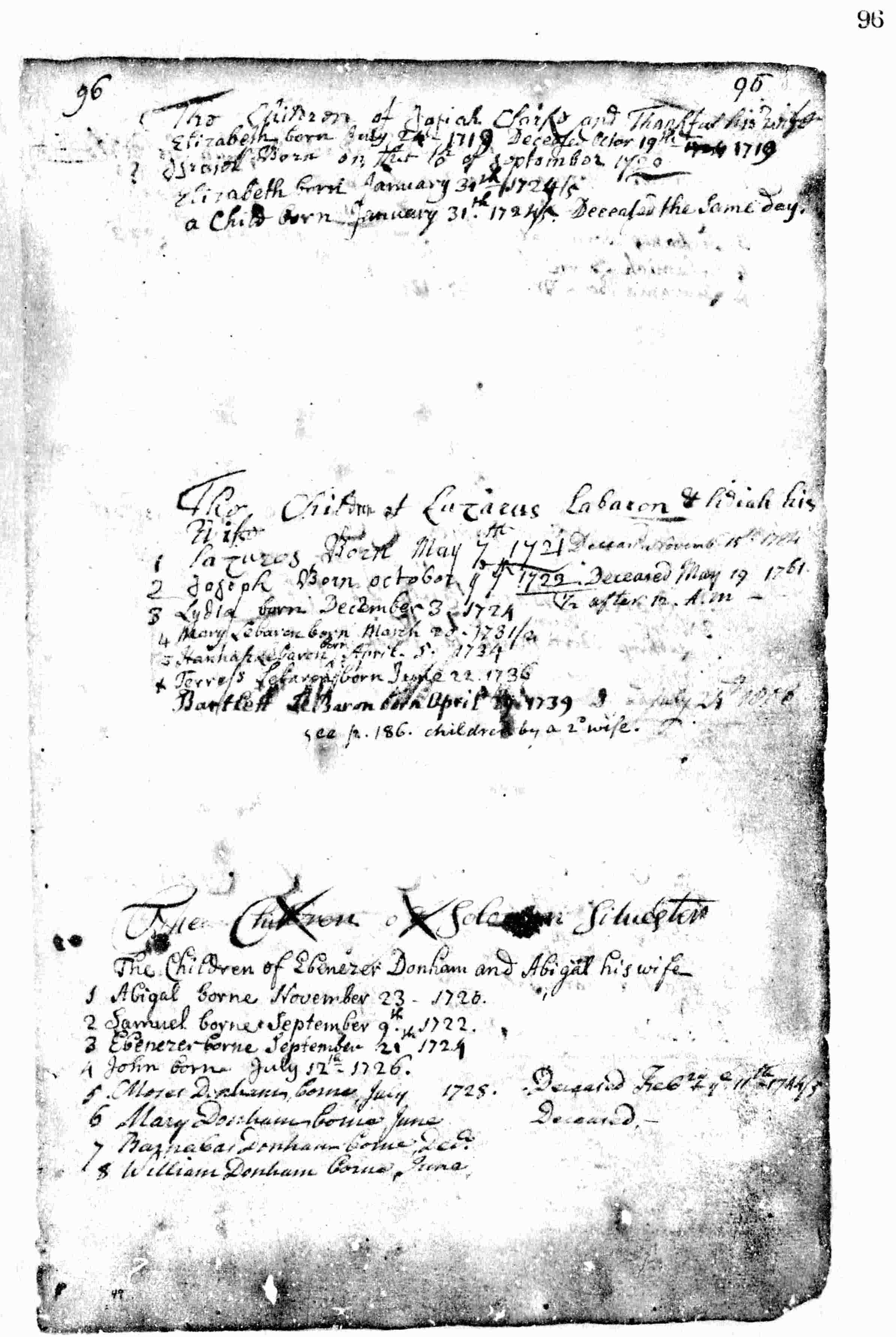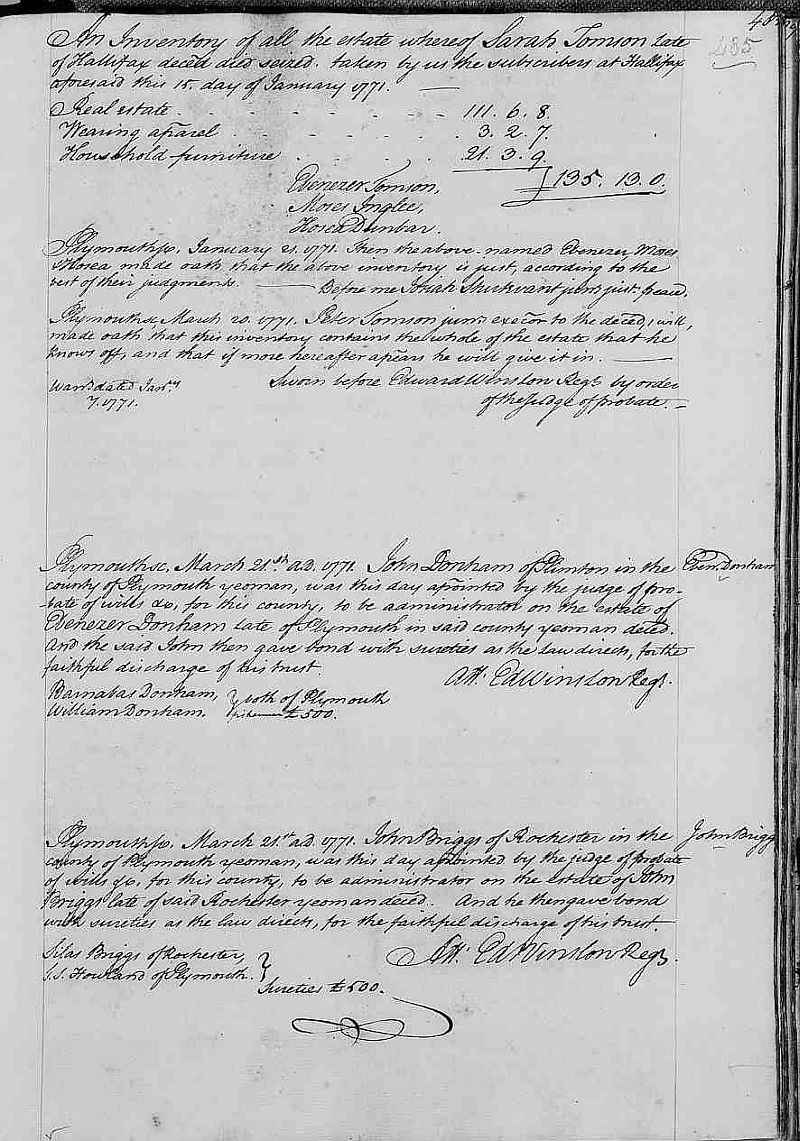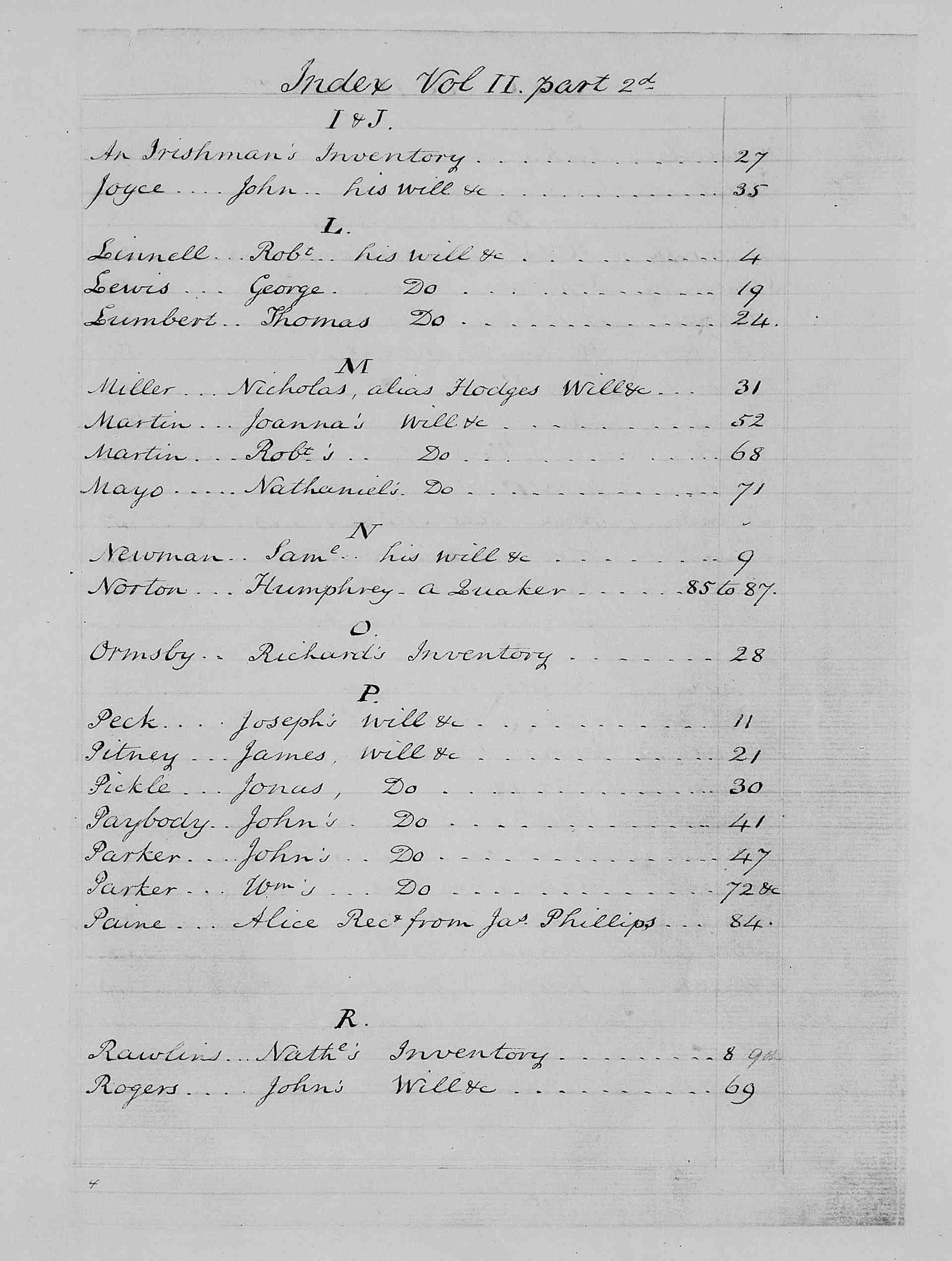John Dunham Society
Required Documentation and Guidance

As outlined in our Membership page, membership REQUIRES that you document your lineage to prove descendancy from Deacon John Dunham. You will find that document research will be a journey not only of your lifetime, but the journey through the bloodline of Deacon John Dunham himself - it's just that important!
We have also described on our membership page the establishment of an "order of priority" for required source documentation as: Primary, Secondary, and Other. We will discuss each of these sources below, and to help with your research we will give you the rationale behind these requirements from the standpoint of a genealogical researcher and why they are necessary.
Questions and Answers:
Question: What kind of paperwork do I need to give you to prove my lineage to Deacon John Dunham?
Answer: You must provide copies of documents that have been overwhelmingly determined by historians and genealogical researchers as definite proof of an event. Each occurrence of a birth, marriage, or death is an "event". While there can be several varieties of document sources, there are sources that have greater credibility, while other sources have lessor, or even no credibility.
Question: Exactly what documents have been overwhelmingly determined by historians and genealogical researchers as definite proof of an event?
Answer: The John Dunham Society gives you a general listing of Primary Documentation as:
Primary Documents - include copies of OFFICIAL GOVERNMENT vital records of birth, marriage, and death certificates. This is the 1st standard to prove your lineage. Be prepared to obtain the vast majority of lineage proof from these documents. An Index Record showing a list of names of persons born, married, or deceased is not an official record, instead you need to obtain the individual birth, marriage or death record listed in the Index. Copies of OFFICIAL birth, marriage and death records/registrations MUST be submitted for all birth, marriage and deaths after the year 1900. Approved (signed and certified) lineages from ancestral societies such as the Mayflower Society, and other approved pilgrim societies (Brewster, Warren, etc.).
- OFFICIAL GOVERNMENT vital records that record the birth, marriage, and death are the most definitive proof. These source documents often link the parents by name to a child, as well as giving location and dates.
- Probate Documents, especially Wills, Guardianships, and Inheritances, can tell many stories, including the names of spouses and children, the spouses of children, and the descriptions of property (land) that was owned and passed on to spouses and children.
- Land Deeds are an excellent form of documentation as they describe property boundaries, locations of land, and purchases and sales of land to family members, often by name and title.
Question: How to I prepare or present primary documents to the John Dunham Society?
Answer: A birth, marriage, or death record from a government source comes in two forms. The older form will only be an entry into a town clerk's page of birth, marriage, or death, OR a church record of the same type of entry. We REQUIRE that the entire page be copied and on the reverse of that page you are to write legibly in pencil the name of the book, i.e. Carver Town Vital Records, Volume 2, Page 144. The same goes for the Church Records. Below are a few examples of Primary Documents with the proper citations for membership applications:
Source citation to be placed on your application: Plym VR 13:96
The citation shows that this primary record comes from the Town of Plymouth and is located within Volume 13, and on page 96.
Note: This type of record that shows a listing of the births for a husband, wife and their children is also known as a "Family Record".
Source citation to be placed on your application: PlymCo PR 20:485
The citation shows that this primary record comes from Plymouth County Probate Records and is located within Volume 20, and on page 485.
This is an example of a NON-RECORD!!!! You cannot use an INDEX AS DOCUMENTATION. The reason for this is that you see a Volume and Page Number and you should continue your research and collect the actual document, not just the listing of a document.
The newer forms of birth, marriage, and death certificates have all the necessary information on the front of the document, so that will suffice, AS LONG AS IT HAS the pertinent information about the individual you are using it for and the name of the town, etc. This is truly self-explanatory, especially for these records after the year 1900.
Question: What if I can't find OFFICIAL GOVERNMENT vital records?
Answer: There are many times when an official government vital record just doesn't exist. For instance, a fire may have destroyed the record(s) of the town, or a birth event may not have been recorded due to the distance of the town's recording office and after the birth it was just not that important to follow up with the recording office. A death event may not have been recorded for the same reasons.
In these cases, where an official government document cannot be located, then a researcher moves their research efforts towards known facts about the individual event. This is the the time that a researcher looks for SECONDARY DOCUMENTATION. Secondary documentation can come in many forms. The premise and thought-process for collecting secondary documentation is that it should give a "higher probability of certainty" of an event and that the event can be linked to a specific individual without the probability that it could be linked to another, unrelated individual. An example would be the recording in a news article that "John Smith died on 8 June of 1811". As the researcher, you have to ask yourself, "Is this the John Smith I am looking for and how can I prove to a historian that this is the same individual?". A newspaper or journal is not a government document first of all. So does the article have other information, such as the names of both the parents, or even a listing of the deceased's children? Does it have a place of death that is the same as a primary document showing birth? Can you also find another document to support (matching) his death place from a court record, a state or federal census report (with other family members listed)? How about the local graveyard having John Smith's gravestone and next to his gravestone there is a gravestone for his parents? That would lend credence to a "higher probability of certainty", wouldn't it? Sure!
The John Dunham Society gives you a general listing of Secondary Documentation as:
Secondary Documents - include copies of approved publications (published books) of family lineages, newspaper articles announcing birth, marriage, and/or deaths. Newspaper or journal articles that contain family lineages, in whole or in part (of the lineage). Photos of headstones that list married couples or children as being buried in a particular location. Family bible records showing births, marriages or deaths (and divorces). Census reports of the United States, or other country, as long as they are in legible English or professionally transcribed. Secondary documents ARE NOT USED ALONE to prove an event and a single event MUST be corroborated by at least one other SECONDARY document. You cannot use separate year census reports to prove a birth date. This is the 2nd standard to prove your lineage.
There have been many books, articles, and periodicals produced over time that reference and discuss the ancient pilgrims and those first settlers in Plymouth and their descendants, such as Deacon John Dunham. The John Dunham Society does not lightly accept every book as a source to prove lineage. This is especially true for the most prominent Dunham Genealogy by Isaac Watson Dunham - which is NOT accepted by the John Dunham Society. Because of the sheer quantity of these publications, we cannot list all of those we accept or deny. It goes without saying that if a publication specifically references a birth, marriage, or death, AND also cites a source to government vital records, then you should obviously go to that source and obtain that vital record. If you find a reference and cannot locate an official vital record, use the reference as a Secondary Document and provide another Secondary Document, such as a Land Deed, Probate Record, Church Record or other record containing multiple corroborative family names to support your claim. If you don't understand what a family lineage or family genealogical published book is here are some examples: FAMILY HISTORIES
- Publications in the form related to the lineage of a particular family, known as family genealogy books, are often well-researched, but not always. If the publication does NOT reference an event with a government records source to where the document can be located, then this publication is certainly not definite proof of an event and YOU must continue to research that event to locate more accurate proof to substantiate the event you are proving.
- Publications that have remained overwhelmingly credible to historians and genealogists due to their repeated confirmation of accuracy of an event by primary documentation are accepted by the John Dunham Society with limited questionability. While there is not a complete list of these publications to provide to you during your research, you should submit such documentation as part of your membership application, at which time the publication and it's sources will be determined by our Historian on a case-by-case basis. Remember that you MUST include a copy of the cover of the publication and the copyright page showing the publisher's address and date of the publication. Of course, you will also include a copy of the pertinent page(s) that you are using to prove your lineage.
Question: Do I need to have more than one secondary document to prove each event?
Answer: Yes, always! You are required to have at least two acceptable secondary documents to prove an event to our historian. Only having two would depend on the quality and acceptability of those documents. If you submit them during a membership application review, and they are not accepted, you will have to find more or other documents to prove the "event" of birth, marriage or death.
Question: What is an acceptable secondary document?
Answer: What we mean by acceptable secondary documentation is that these two documents (at minimum) cannot be ambiguous, meaning open to the interpretation by our Historian that together these documents could also be used to reference an unrelated individual. Example of ambiguous or poor documentation: There were 2 or more John Smith's in the family you are linking to, perhaps they were cousins that had the same parental names and were born in the same town. If this is the case, then you would need MORE THAN TWO SECONDARY DOCUMENTS TO PROVE YOUR CASE to eliminate the possibility that the wrong John Smith is being referenced. This type of scenario is infrequent, but is possible. An example of good secondary documentation would be that you provide an approved publication that states Joe Smith was born on 1 June 1884, and then you also supply a photo of gravestone that shows Joe Smith's name and date of birth as June 1, 1884. If you can collect more information to support an event, then please provide as much as you can.
Question: How do I submit secondary documentation to the John Dunham Society?
Answer: All secondary documentation MUST be presented to our historian as a legible copy of the entire article or page, along with the cover of the journal and copyright page (copyright page shows the date), or if this is a newspaper article, it MUST show the date and publication name and location of the newspaper, meaning the town (not in your writing, but on the document itself). If a photo is submitted (gravestone, page in book, etc.) then this printed document MUST be clear and legible and have information of where the grave is located, or where the book was retrieved/found.
If you have additional information that you would like to include with a document, please write such information legibly on the back of both submitted copies of such document IN PENCIL. If our reviewing Historian can't read it, they will contact you for a more suitable copy.
Question: What if I cannot find more than one secondary document?
Answer: You must provide supportive "Other Documentation".
The level of proof remains under the scrutiny of "higher probability of certainty". Your case can be made by providing a mixture of secondary documentation with "Other Documents" that help create an unambiguous story of an event. Again, the burden lies completely on the researcher proving to the historian a case that there "just can't be another answer". A researcher will, in all cases, have to provide not two, but several "Other" documents to support a single event when there are no Secondary Documents available to the researcher. This is not the time to give up research, but to think "out of the box" and collect even more documentation to create a story that is a "higher probability of certainty". We cannot list all the possible "Other Documentation" variations available, that is up to the researcher to collect and provide.
The John Dunham Society gives you a general listing of Other Documentation as:
Other Documents - Other approved documents that support the applicant's lineage (not presented as either primary or secondary) such as, but not limited to Mason's membership records, etc. can be provided to support secondary documents. AGAIN, OTHER does not mean ONLY - Other documents ARE USED TO SUPPORT SECONDARY DOCUMENTS. This is the last standard to prove your lineage.
Question: What if I cannot find any primary, secondary, or other supportive documentation to prove a birth, marriage or death event for an individual?
Answer: This is one of the most difficult times in genealogical research. When you can't find either primary, secondary, or any other documentation to prove a birth, marriage or death - you have essentially come to "dead end". As an example, in the 1800s, the mid-west (Kansas) United States, had many towns and counties that had no established system to maintain any records for birth, marriage or death. So although logic would tell us that a person who was born in, and lived their entire life in Kansas in the 1800s WAS born there and the event did happen, there simply wasn't a government system to create a record of that birth event.
You NEED to exhaust all your research techniques before you give up your search. Go back over all your possibilities of parents and children connected to that individual. Search for Probate Records, Land Deeds, Newspapers, U.S. and State Census Reports. Contact local historians, libraries, and government offices. In the absence of all such documentation listed above that connects one individual to another, you, as a personal family researcher may make an implied decision that a connection is real, however, the John Dunham Society, requiring documentation to prove a "higher probability of certainty", will likely be unable to approve such a connection for membership purposes.
Documentation that is not acceptable for proof of lineage for membership into the John Dunham Society:
The John Dunham Society founders have agreed that we will not accept the following documents (or parts thereof) as proof of lineage:
- Sons of the American Revolution (SAR) and Daughters of the American Revolution (DAR) lineage certifications. If you were able to obtain certification through these organizations, then request from SAR/DAR the official government records that proved your entire lineage and send those documents along with your John Dunham Society Membership Application.
- Isaac Watson Dunham’s Deacon John Dunham of Plymouth, Mass., 1589-1669, and His Descendants (1907), as it is a very poorly written book, confusing, difficult to use, and often erroneous.
Question: Why don't you accept copies of the Sons or Daughters of the American Revolution Membership Certifications as documentation, also known as SAR and DAR?
Answer: The John Dunham Society has thoroughly researched many standards of genealogical societies over the years. Our standards for verification of lineage models the General Society of Mayflower Descendants (GSMD). Within that, the reasoning is clear - While we do accept the GSMD approved certifications because of their strict PRIMARY DOCUMENTATION requirements, the SAR and DAR verification process, early on in that organization's formation, primarily used government war records to create a membership base. While we greatly respect those honorable organizations, we also accept that the same stringent methods used by the GSMD were not used by the SAR or DAR organizations.
Our historian(s) take pride in researching your submitted documentation. Each application requires many hours of research. Throughout your application process and beyond, be courteous to your historian as they take their job seriously and will not be swayed from performing their duties of due diligence in confirming your lineage as directed by the Society. If they ask you to seek out BETTER DOCUMENTATION to prove an event (birth, marriage or death), don't argue with them. They will help you in many cases, but are in no way obligated by the Society to do your work in collecting documentation.
Question: What if I have questions about a document's acceptability?
Answer: You will not know about a document's acceptability until you submit the document as part of your membership application. Our Historian cannot review individual documents prior to the submission of a membership application.
You should never count on an obviously questionable document to be accepted by the Historian. You should thoroughly read all the information provided above, and research appropriately.
A. Methods to obtain required documentation.
- Contact the State or local (County, Town, Parish) Vital Records office through their website or telephone and request the desired birth, marriage or death certificate. The term "certificate" is a general term and may not be used in some vital record's offices or websites. The term "register" or "record" i.e., marriage record or death register or the like may be used as well. This method is especially true for modern records because of privacy. There will almost always be a fee (cost) involved in obtaining these documents (and fees may vary).
- Your local library or genealogical society are an important and invaluable asset to your research. Remember that if you are making copies of publications (books, articles, etc.), ensure you copy the cover and copyright information along with the pertinent page(s).
- The use of both commercial and non-commercial websites is an invaluable tool for primary and secondary documentation. With the interest in genealogical research gaining ground and the fact that technology has given us the digital scanner, we can now find many records on the internet. The following websites (both "pay" and "free") may help in your search:
- Ancestry.com (pay site)
- FamilySearch.org (free site)
- Findmypast.com (pay site)
- National Archives (free US government site)
B. Filling out your John Dunham Society Membership Application.
- In order to make the membership process as streamline as possible it is very important that you collect and arrange your submitted documents in the correct order. The John Dunham Society requires only copies of these records, they should not be originals! Here is our required "assembly" of documents:
a. Starting with yourself and spouse (if applicable), arrange those documents on TOP, in the order of YOUR birth certificate first, then your marriage certificate (if applicable), then the birth certificate (and death if applicable).
b. Then UNDER your documents, you will arrange your parents by birth certificate of LINE CARRIER (LINE CARRIER is the person in which the bloodline runs back to John Dunham), marriage certificate and death certificate (if applicable), then the birth certificate of the spouse (or spouses in order of most recent to first), and death certificate (if applicable).
c. Then UNDER your parents, arrange your grandparents (and so on backwards) in the same manner as your parents i.e. birth, marriage, death - just keep repeating that information.
d. On the back OF EACH DOCUMENT, write IN PENCIL the number of the generation, i.e. GEN 1, GEN 2, etc. If you are emailing your documents to us, make sure you include the generation of each set of documents clearly explained within the email.
e. On the very TOP, place your UNSIGNED membership application pages. Do not sign because your application still has to be reviewed, there might be issues and/or changes to be made. Once our review is satisfactorily completed, we will return the application to you for your signature.
f. In your application you will see the MOST IMPORTANT COLUMN - that's the references column where you MUST CITE REFERENCES to your collected documents. You can find our Standard Abbreviations document HERE.
Remember that while the requirements above may seem daunting or difficult, they are in place to ensure that YOUR lineage can be accurate. Good luck on your historical family research and we look forward to hearing from you!



